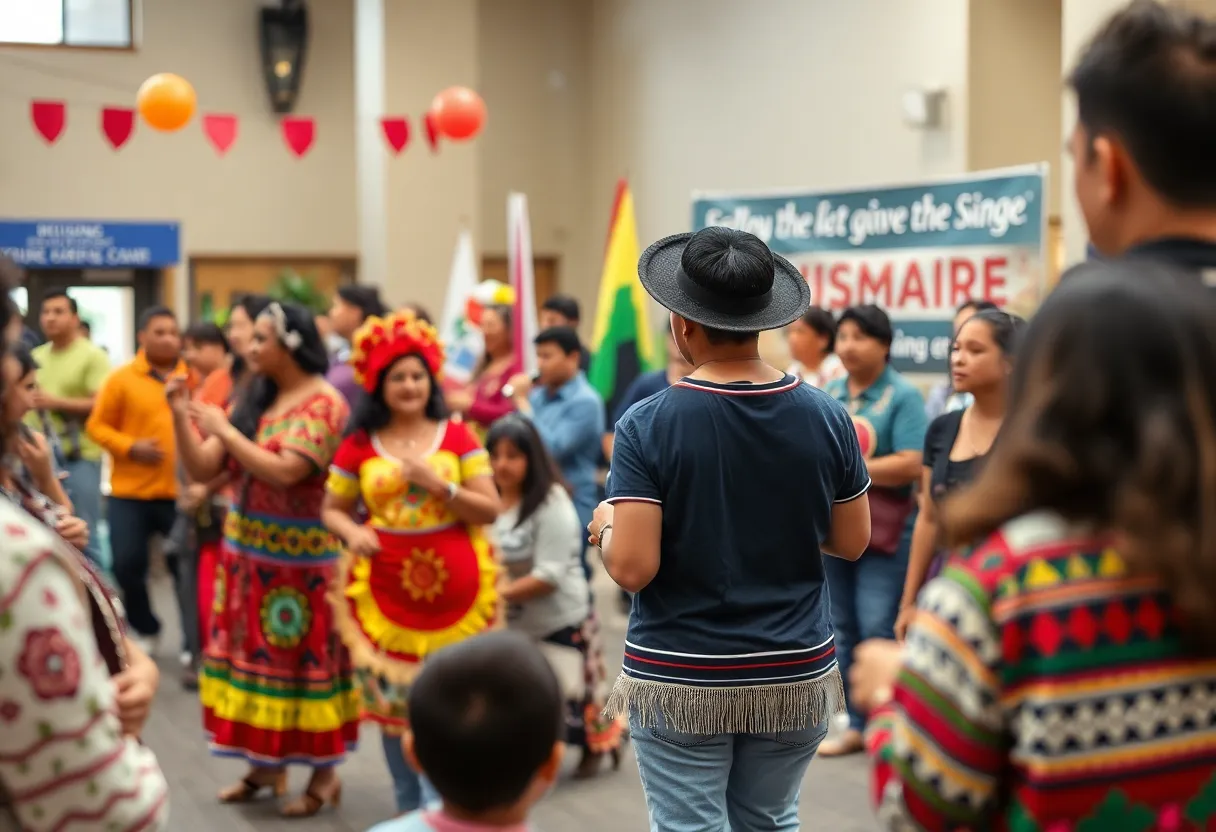Tucson, October 16, 2025
A Tucson nonprofit is honoring Hispanic Heritage Month by emphasizing its commitment to educating migrant bracero workers and underserved communities. Since 1967, the organization has provided GED preparation and vocational training, showcasing success stories from students transitioning to professional careers. The recent event featured cultural performances and reinforced the importance of bilingual education in addressing gaps for Hispanic youth in local school districts. As enrollment rises and partnerships with nearby schools strengthen, the nonprofit remains a crucial resource for educational access in the region.
Tucson Nonprofit Honors Hispanic Heritage Month with Focus on Migrant Education Legacy
Tucson, AZ – A local nonprofit marked Hispanic Heritage Month by highlighting its long-standing efforts to educate migrant bracero workers and underserved communities through ongoing programs. The organization, active since 1967, continues to offer GED preparation and vocational training, serving as a key resource for educational access in the area.
The celebration took place at the nonprofit’s center in South Tucson, where community members gathered to recognize the impact of these initiatives. Students shared their experiences with the programs, emphasizing how they have supported transitions from farm work to professional careers. Cultural performances added to the event, reflecting the heritage being honored throughout the month.
These efforts remain especially relevant amid changes in federal education policies. The nonprofit’s commitment to bilingual education helps address gaps for Hispanic youth, particularly in local school districts. Partnerships with nearby schools, such as Tucson Unified School District, integrate these services to improve graduation rates among participants.
Historical Role in Migrant Education
The organization’s work began in 1967, focusing on migrant bracero workers who contributed to the region’s agriculture. Over the decades, it has evolved to provide comprehensive support, including high school equivalency courses and job skills training. This legacy underscores a consistent dedication to empowering generations from varied backgrounds.
Today, the programs target underserved populations, offering free access funded by grants. Enrollment has increased by 15% this year, indicating growing demand for these services. The nonprofit’s approach ensures that individuals facing barriers, such as language or economic challenges, can pursue further education and employment opportunities.
Current Programs and Community Impact
At the heart of the initiative are GED programs designed to help adults complete their education. Vocational training covers practical skills for various industries, enabling participants to enter the workforce more effectively. The bilingual format accommodates diverse learners, making resources available in both English and Spanish.
Integration with local schools plays a crucial role. By collaborating with districts like Tucson Unified, the nonprofit supports at-risk students, contributing to higher retention and completion rates. This partnership model extends the reach of educational services beyond traditional classrooms.
Community leaders have noted the value of these efforts in promoting inclusion. The programs foster environments where cultural identities are respected, while building pathways to economic stability. As enrollment rises, the nonprofit continues to adapt, ensuring its services meet evolving community needs.
Broader Context of Educational Support
In the face of shifting federal policies, local organizations like this one fill critical gaps in education delivery. Bilingual programs become increasingly important for Hispanic communities, where access to quality learning resources can determine long-term outcomes. The nonprofit’s focus on free services, supported by grants, removes financial hurdles for many families.
The South Tucson event highlighted personal stories of success, from former farmworkers advancing to skilled professions. Such testimonials illustrate the tangible benefits of sustained educational investment. With Hispanic Heritage Month serving as a backdrop, the celebration reinforced the ongoing relevance of these contributions to Tucson’s diverse population.
The nonprofit’s growth reflects broader trends in community education. As more individuals seek alternatives to standard schooling, demand for flexible, accessible options rises. This 15% enrollment uptick aligns with increased awareness of adult education’s role in workforce development.
Future Outlook for Local Initiatives
Looking ahead, the organization plans to expand its offerings, potentially reaching more schools and community centers. Continued grant funding will support this growth, maintaining free access for participants. The emphasis on vocational training positions it to address local job market needs, benefiting both individuals and the economy.
In Tucson, where demographic shifts highlight the importance of inclusive education, these programs stand out. They not only commemorate historical efforts but also drive current progress. By honoring Hispanic Heritage Month through action, the nonprofit demonstrates a model for community-driven change.
The event’s success points to the potential for wider collaboration. Schools, businesses, and residents can build on this foundation to enhance opportunities further. As the month progresses, such initiatives remind the community of education’s power to bridge divides and open doors.
(Word count: 612)
FAQ
What is the main focus of the nonprofit’s celebration during Hispanic Heritage Month?
The celebration highlights the organization’s legacy of educating migrant bracero workers since 1967 and its current GED programs and vocational training for underserved communities.
Where did the Hispanic Heritage Month event take place?
The event took place at the nonprofit’s center in South Tucson.
What types of programs does the nonprofit offer?
The nonprofit offers GED preparation and vocational training, with a focus on bilingual education.
How has enrollment in the programs changed this year?
Enrollment has increased by 15% this year.
What partnerships does the nonprofit have with local schools?
The nonprofit partners with local schools like Tucson Unified School District to integrate services and boost graduation rates among Hispanic youth.
How is access to the programs funded?
Funding from grants ensures free access to the programs.
Key Features Chart
| Feature | Description |
|---|---|
| Founding Year | 1967, starting with migrant bracero workers |
| Core Programs | GED preparation and vocational training |
| Educational Focus | Bilingual education for underserved communities |
| Partnerships | With local schools like Tucson Unified School District |
| Enrollment Growth | Increased by 15% this year |
| Funding Model | Grants providing free access |
| Event Highlights | Student testimonials and cultural performances at South Tucson center |
Deeper Dive: News & Info About This Topic
HERE Resources
Tucson Celebrates Fall with 18 Must-See Events
El Rio Neighborhood Association Unveils Revitalization Project
Frida Kahlo-Inspired Garden Opens at Pima Community College




